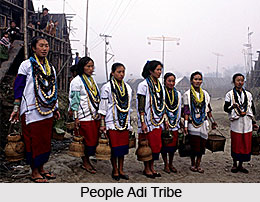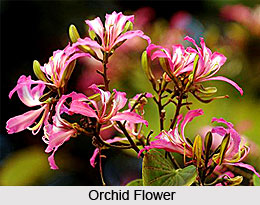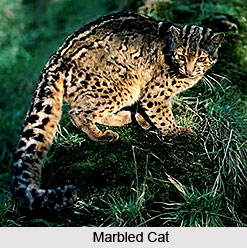 One of the famous Biosphere Reserves in India, the Dihang-Dibang Biosphere Reserve is located in the districts of West Siang, Upper Siang and Upper Dibang valley of Arunachal Pradesh. The reserve is counted among the few nature preserves around the world that are untouched from the modern civilisation. None of the parts of this Biosphere Reserve is reachable by road and the only way to reach there, is to walk. The reserve is comprised of a huge area of 5112 sq. km. The core zone of the reserve has area coverage of 4095 sq. km. and the buffer zone is spread over 1017 sq. km.
One of the famous Biosphere Reserves in India, the Dihang-Dibang Biosphere Reserve is located in the districts of West Siang, Upper Siang and Upper Dibang valley of Arunachal Pradesh. The reserve is counted among the few nature preserves around the world that are untouched from the modern civilisation. None of the parts of this Biosphere Reserve is reachable by road and the only way to reach there, is to walk. The reserve is comprised of a huge area of 5112 sq. km. The core zone of the reserve has area coverage of 4095 sq. km. and the buffer zone is spread over 1017 sq. km.
The Dihang-Dibang Biosphere Reserve is actually a steep terrain, combined with difficult weather as well as the lack of communication. Only about 10,000 people live in this huge area, and they are primarily from the Tribal communities like Adi, Buddhist and Mishmi. There are also ten sub-Tribes reside within the reserve, including the Pasis, Padams, Karkos, Pangis, Simongs, Ashings, Tangams, Komkars, Millangs, Dalbings, Membas, Khambas, and Idu Mishmis. On the whole, the Biosphere Reserve is almost totally forested with villages and cultivations located on the lower slopes and terraces edging the major rivers systems. In some parts of the reserve, the forest appears as a continuous swath from the sub-tropics to the cold of the tree line. Apart from that, a large area of the Reserve also lies at elevations above the tree line and this area features a very special array of plants and animals. The Reserve exhibits a wonderful extent of sub-tropical forest.
The Dihang-Dibang Biosphere Reserve has quite rich natural vegetation. The vegetation in this reserve varies according to habitat. Altitude is one of the major factors in determining plant growth, as the altitude of the Reserve varies from approximately 500 to 6000 meters (with associated temperatures and rainfall variability). Apart from altitude, there are also some other factors in determining the plant growth, including the varying soils and differing exposures. Some of the major microhabitats in this Reserve include the snow peaks (with algae in the snow and lichens on exposed rocks), glacial lakes, forest ponds, stream edge habitat, etc. The Reserve represents more than 8 forest or vegetation types like the Sub-Tropical Broad Leafed, Sub-Tropical Pine, Temperate Broad Leafed, Temperate Conifer, Sub-Alpine Woody Shrub, Alpine Meadow, Bamboo Brakes, and Grass Lands.
 The Dihang-Dibang Biosphere Reserve constitutes a part of one of the "Biodiversity Hot Spots" in the world. The reserve is home to approximately more than 1500 species of flowering plants. The area is also possible to be the centre of origin for some common crop plants like Banana. Apart from that, several NTFP and economic plant groups can also be found here that include the medicinal, aromatic, timber, fodder and fuel plants. The most common ornamental plants found in this reserve include the Orchids, Rhododendrons and Primulas. The reserve is home to the rare Orchid, Vanda stangeana, along with over 50 species of Rhododendrons. The area also provides shelter for saprophytes like Monotropa uniflora, Epipogium spp., and Gastrodia sp; and the Parasitic plants like Balanophora sp., Boescheckia sp., Galeola sp., etc. Apart from these, some plants belonging to the "primitive" families are also seen here. These plants include Mangletia gaveana, Magnolia campbellii, Schizandra neglecta, Holbelia latifolia, and various species of Ranunculus, etc. Some of the very rare and endangered plant species found in the Dihang-Dibang Biosphere Reserve include the Cyathea sp., Angiopteris sp., Livingstonia sp., Coptees teeta and Amenototaxus sp., etc.
The Dihang-Dibang Biosphere Reserve constitutes a part of one of the "Biodiversity Hot Spots" in the world. The reserve is home to approximately more than 1500 species of flowering plants. The area is also possible to be the centre of origin for some common crop plants like Banana. Apart from that, several NTFP and economic plant groups can also be found here that include the medicinal, aromatic, timber, fodder and fuel plants. The most common ornamental plants found in this reserve include the Orchids, Rhododendrons and Primulas. The reserve is home to the rare Orchid, Vanda stangeana, along with over 50 species of Rhododendrons. The area also provides shelter for saprophytes like Monotropa uniflora, Epipogium spp., and Gastrodia sp; and the Parasitic plants like Balanophora sp., Boescheckia sp., Galeola sp., etc. Apart from these, some plants belonging to the "primitive" families are also seen here. These plants include Mangletia gaveana, Magnolia campbellii, Schizandra neglecta, Holbelia latifolia, and various species of Ranunculus, etc. Some of the very rare and endangered plant species found in the Dihang-Dibang Biosphere Reserve include the Cyathea sp., Angiopteris sp., Livingstonia sp., Coptees teeta and Amenototaxus sp., etc.
Apart from the rich variety of natural vegetation, the Dihang-Dibang Biosphere Reserve also provides natural habitat to numerous fauna species. Some of these fauna species are endemic to the eastern Himalayas and many of these and others are considered as endangered. About 45 species of insects including Moths and Butterflies are found in the reserve and the collection of amphibians in the reserve is also great. However, the reserve is not that much rich in providing habitat to the reptiles. A wonderful cross-section of Asian Snakes can be found in the reserve. Though most of these snakes are the non-poisonous members of the Colubridae family, some poisonous snakes are found here, as well. These species include the Green Pit Vipers, Cobras (Naja and Ophiophagus) and Kraits. The Indian Rock python is also found here.
The Dihang-Dibang Biosphere Reserve is home to a rich variety of mammal species. Several members of the Cat family like Tiger, Spotted or Common Leopard, Clouded Leopard, Snow Leopard, Golden Cat, Jungle Cat, Marbled Cat, Leopard Cat, etc. can be found in different elevations in this reserve. The other important mammal species found in the Biosphere Reserve include Blue Sheep, Red Panda, Takin, Musk Deer, Bison, Serow, Himalayan Black Bear, Sloth Bear, Indian Wild Dog, Red Fox, Deer, Assamese Macaque, Otter (both common & clawless), Squirrel, Civet, Wild Boar, etc.
 Apart from the rich variety of natural vegetation and mammal species, the Dihang-Dibang Biosphere Reserve also provides natural habitat to numerous bird species. Till 1997, about 195 species of bird had been recorded in the reserve. The very much threatened species like Sclater`s Monal and Blyth`s Tragopan are among the most interesting of these species. Apart from these, some of the other important bird species found in the Biosphere Reserve include the Temminck`s Tragopan, Pale-Capped Pigeon, Purple Cochoa, Nepal Cutia, Pale Blue Flycatcher, Wedged Billed Wren-Babbler, Water Pipit, Japanese Bush Warbler, Isabeline Wheatear, Black Faced, Chestnut-Eared, Pine Buntings, etc. There is also a possibility to find the Rufous-Tailed Babbler in the Dihang-Dibang Biosphere Reserve.
Apart from the rich variety of natural vegetation and mammal species, the Dihang-Dibang Biosphere Reserve also provides natural habitat to numerous bird species. Till 1997, about 195 species of bird had been recorded in the reserve. The very much threatened species like Sclater`s Monal and Blyth`s Tragopan are among the most interesting of these species. Apart from these, some of the other important bird species found in the Biosphere Reserve include the Temminck`s Tragopan, Pale-Capped Pigeon, Purple Cochoa, Nepal Cutia, Pale Blue Flycatcher, Wedged Billed Wren-Babbler, Water Pipit, Japanese Bush Warbler, Isabeline Wheatear, Black Faced, Chestnut-Eared, Pine Buntings, etc. There is also a possibility to find the Rufous-Tailed Babbler in the Dihang-Dibang Biosphere Reserve.
The reserve also shares the record for low population densities with places like the Changtang Reserve in Tibet and the Gobi reserves in Mongolia. The reserve has a population density of only 2 people per sq. km. On the whole, the Dihang-Dibang Biosphere Reserve is indeed one of the most unique and valuable biosphere reserves in India.











